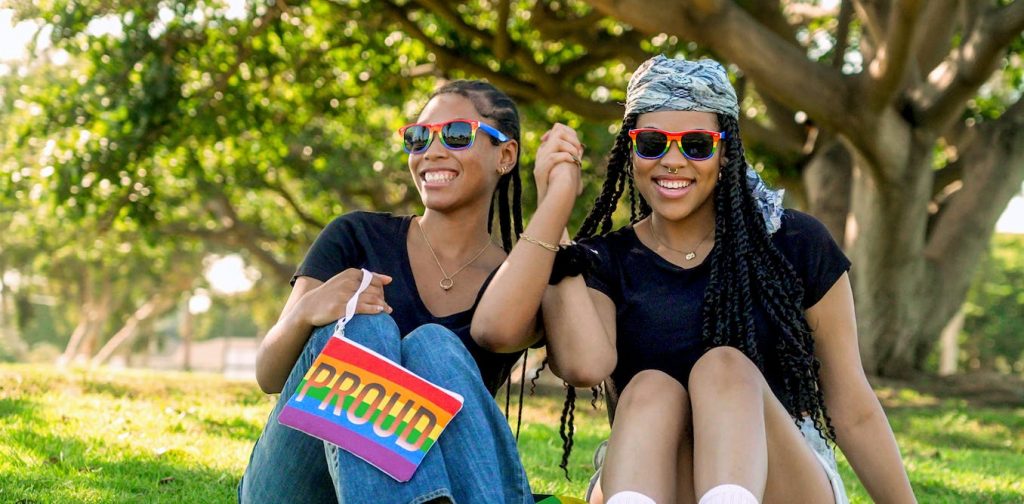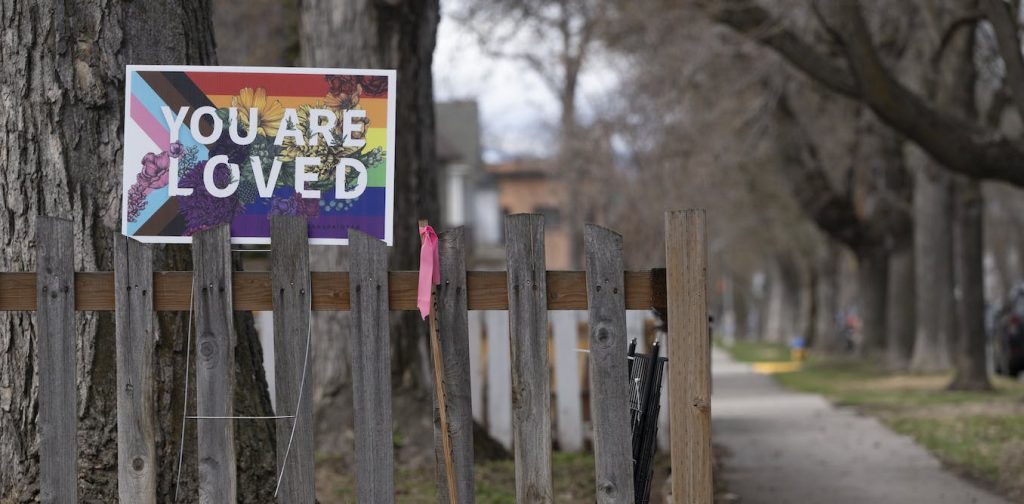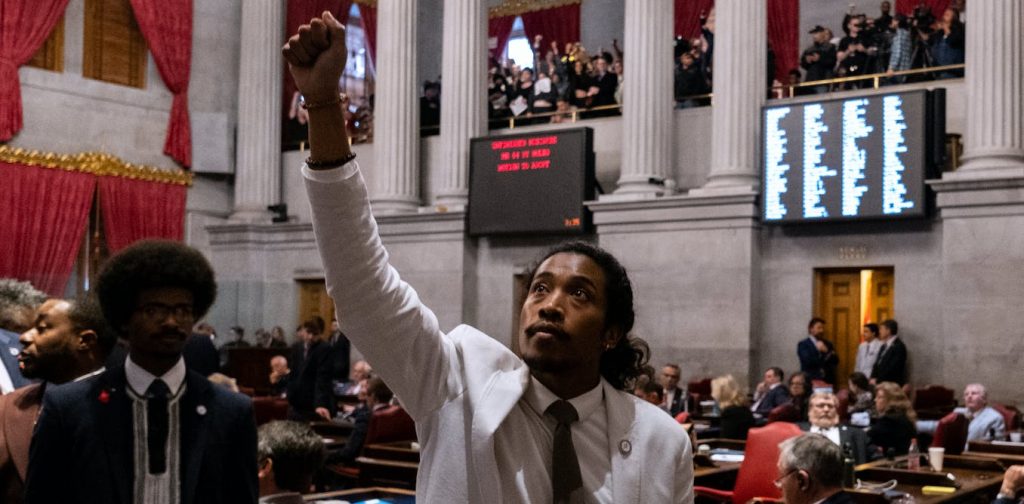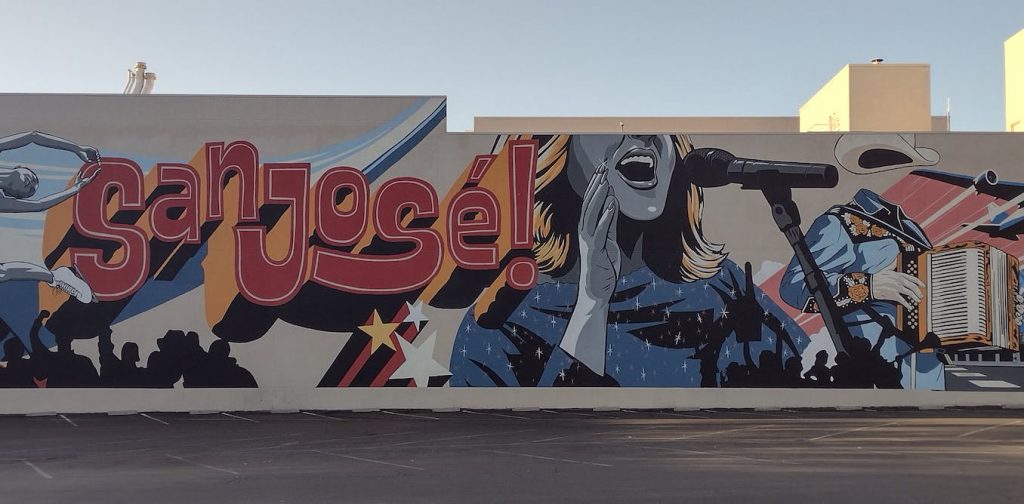From Stonewall to Pride, the fight for equal rights has been rooted in resistance led by Black transwomen


Its unclear who threw the first brick at Stonewall Inn on that night in New York City that arguably launched the gay rights liberation movement.
As part of queer lore, Marsha P. Johnson, a Black transwoman at the forefront of gay liberation, or Sylvia Rivera, a Latina transwoman, was the first. But based on their accounts of that night of June 28, 1969, neither threw that first brick.
Johnson admitted to arriving after the riots had started, and Rivera explained in an interview:
“I have been given the credit for throwing the first Molotov cocktail by many historians, but I always like to correct it. I threw the second one; I did not throw the first one!”
The most likely scenario does not involve a brick or Molotov cocktail but rather the pleas of Storme DeLarverie, a mixed-race lesbian.
While she was being thrown into the back of a police car, she asked her queer brothers and sisters, “Aren’t you going to do something?”
Because of Mafia ownership and stringent liquor laws, the Stonewall Inn, a popular night spot for the queer community, was an easy target for police raids during the 1960s.
At approximately 2 a.m., New York police officers arrived to clear out the bar at its closing time. Initially, most patrons were cooperative, but as harassment and arrests increased, the mostly queer patrons fought back.
Though the details of the origins of that night remain murky, what is clear is that both Johnson and Rivera were there and would later become anchors of gay rights and queer resistance.
Their protests, as well as the actions of other Black gay people in an earlier and little-known act of defiance, demonstrate how queer women of color were often overlooked but at the forefront of gay liberation.
Despite some social progress, Black transwomen continue to pay the price, sometimes with their lives.
Misperceptions of the Stonewall Riots
As a first-generation Black American and gay professor who researches the intersection of race and health, HIV and queer activism, I look for ways to better teach queer activism during my rhetoric of social movements course.
I have learned that the story of Stonewall became popularized when a movie was released in 2015. But the “Stonewall” movie was met with harsh criticism for whitewashing the story and omitting the role of Black and Latina queer people.
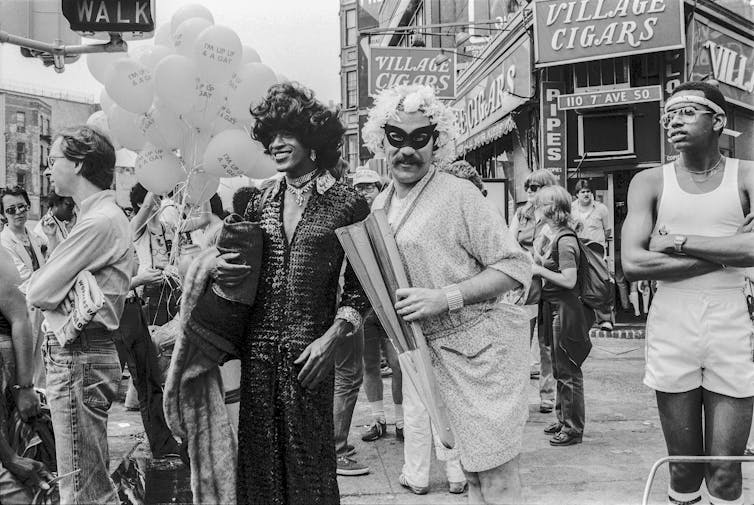 Gay liberation activist Marsha P. Johnson wears a black sequined jumpsuit during a 1982 Pride March. Barbara Alper/Getty Images
Gay liberation activist Marsha P. Johnson wears a black sequined jumpsuit during a 1982 Pride March. Barbara Alper/Getty Images
In the movie, a gay white man throws the first brick, but almost every public account of the night discredits this version.
Instead, it was queer people of color, especially gender nonconforming individuals, who led the charge. These individuals and other examples of queer resistance are often erased and forgotten in popular culture.
An overlooked act of defiance
Stonewall was not the first act of public defiance by a gay community.
The Compton’s Cafeteria riot took place about three years before Stonewall and nearly 3,000 miles away in San Francisco.
Compton’s Cafeteria, located in San Francisco’s Tenderloin district, was a popular late-night gathering spot in the 1960s for transgender people, particularly transwomen.
But the cafeteria’s management and the police subjected these marginalized communities to harassment and constant mistreatment. Transwomen were often arrested under female impersonation laws and faced public humiliation and enduring physical violence.
In August 1966, a pivotal incident at Compton’s Cafeteria sparked the flames of resistance.
The documentary “Screaming Queens” highlights the injustice faced by the trans community at the time, which was mostly women of color engaging in sex work.
After years of enduring mistreatment, a group of transwomen, drag queens and gender-nonconforming individuals decided they had endured enough.
When a police officer attempted to arrest one of the transwomen, she defiantly threw her cup of hot coffee in his face. Within a few moments, patrons overturned a police car.
This act of resistance ignited a spontaneous uprising within the cafeteria and on the streets. By the time it was over, police had arrested dozens of people and beaten countless others.
Although the Compton’s Cafeteria riot did not receive the same level of national attention as other events, it had a profound and lasting impact.
Hate still runs rampant
Despite these acts of public defiance and growing public acceptance, transwomen of color repeatedly report higher rates of unemployment, elevated rates of stigma from health care providers, shattered trust with law enforcement and disproportionate rates of HIV and other ailments.
 A demonstrator takes part in the Queer Liberation March on June 28, 2020, in New York. David Dee Delgado/Getty Images
A demonstrator takes part in the Queer Liberation March on June 28, 2020, in New York. David Dee Delgado/Getty Images
In addition, the murder of transpeople nearly doubled from 29 deaths in 2017 to 56 in 2021, according to the nonprofit Everytown for Gun Safety.
The Human Rights Commission notes that Black and Latina transwomen are at the highest risk of violence, with some assailants being able to skirt jail time due to “gay/trans panic defense ,” which enables a suspect to blame their violent reaction on the victim’s sexuality.
So far in 2023, the murders of Cashay Henderson, a Black transwoman and KoKo Da Doll, the lead actor in “Kokomo City,” a Sundance Award-winning documentary, serve as tragic reminders of the ongoing violence and discrimination targeting queer people.

